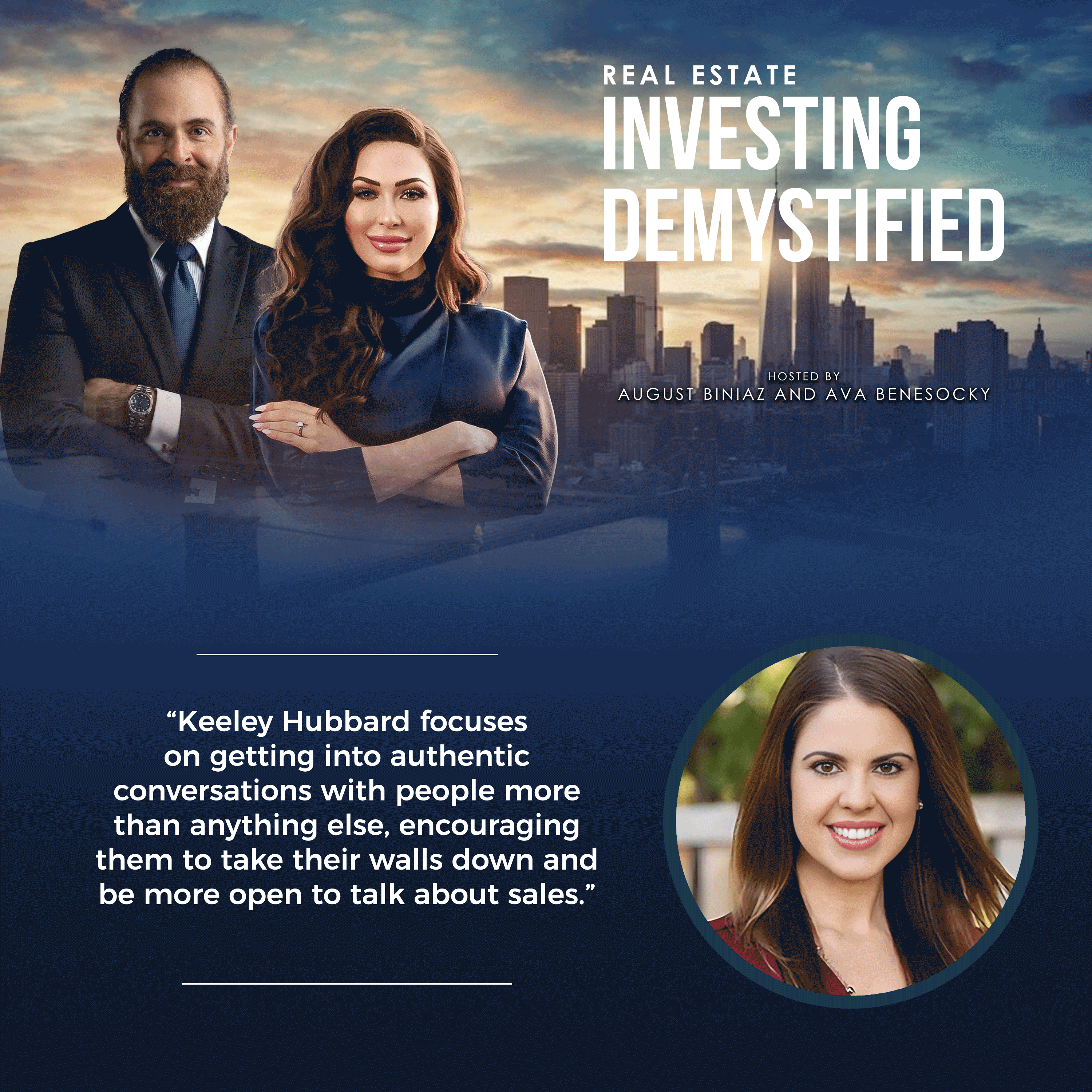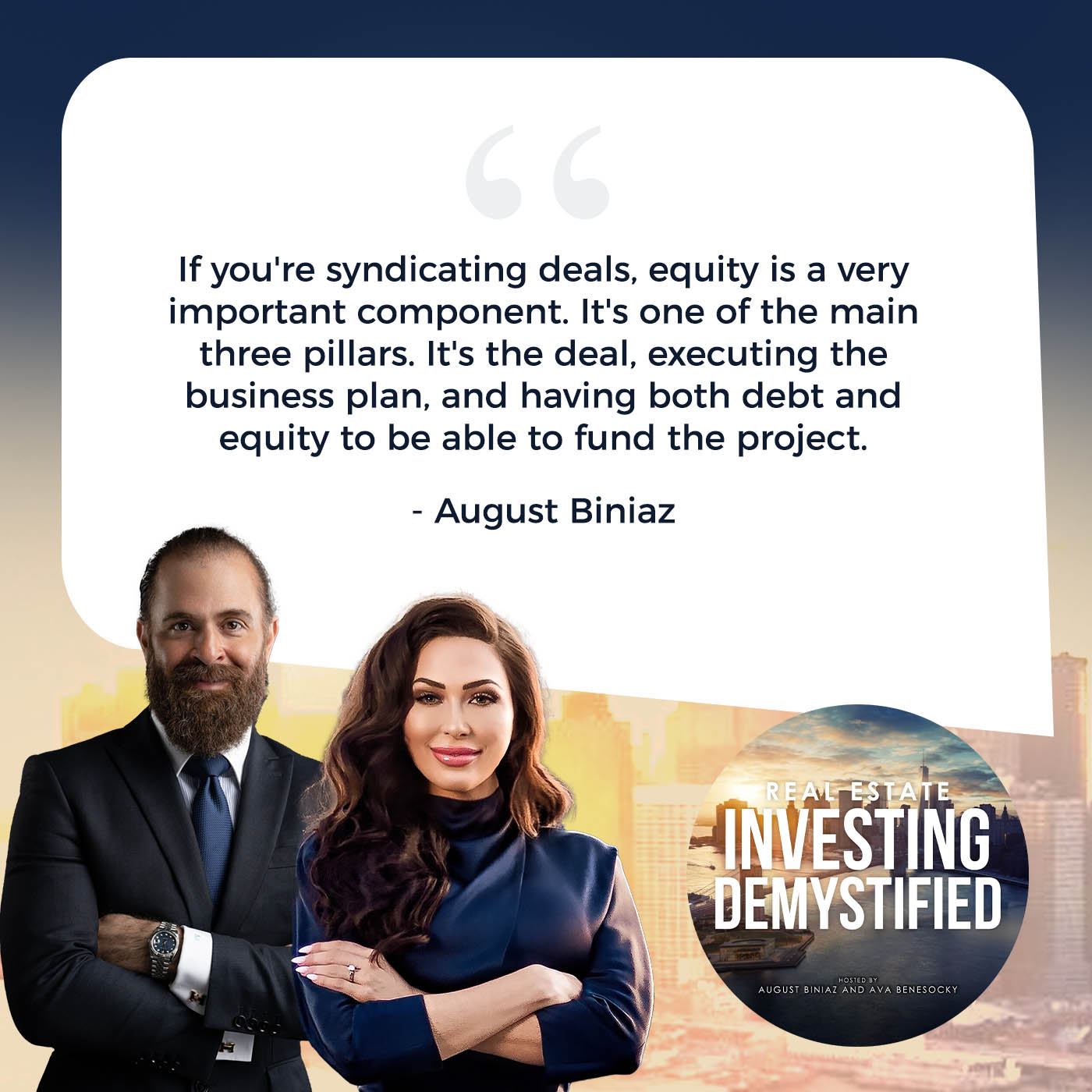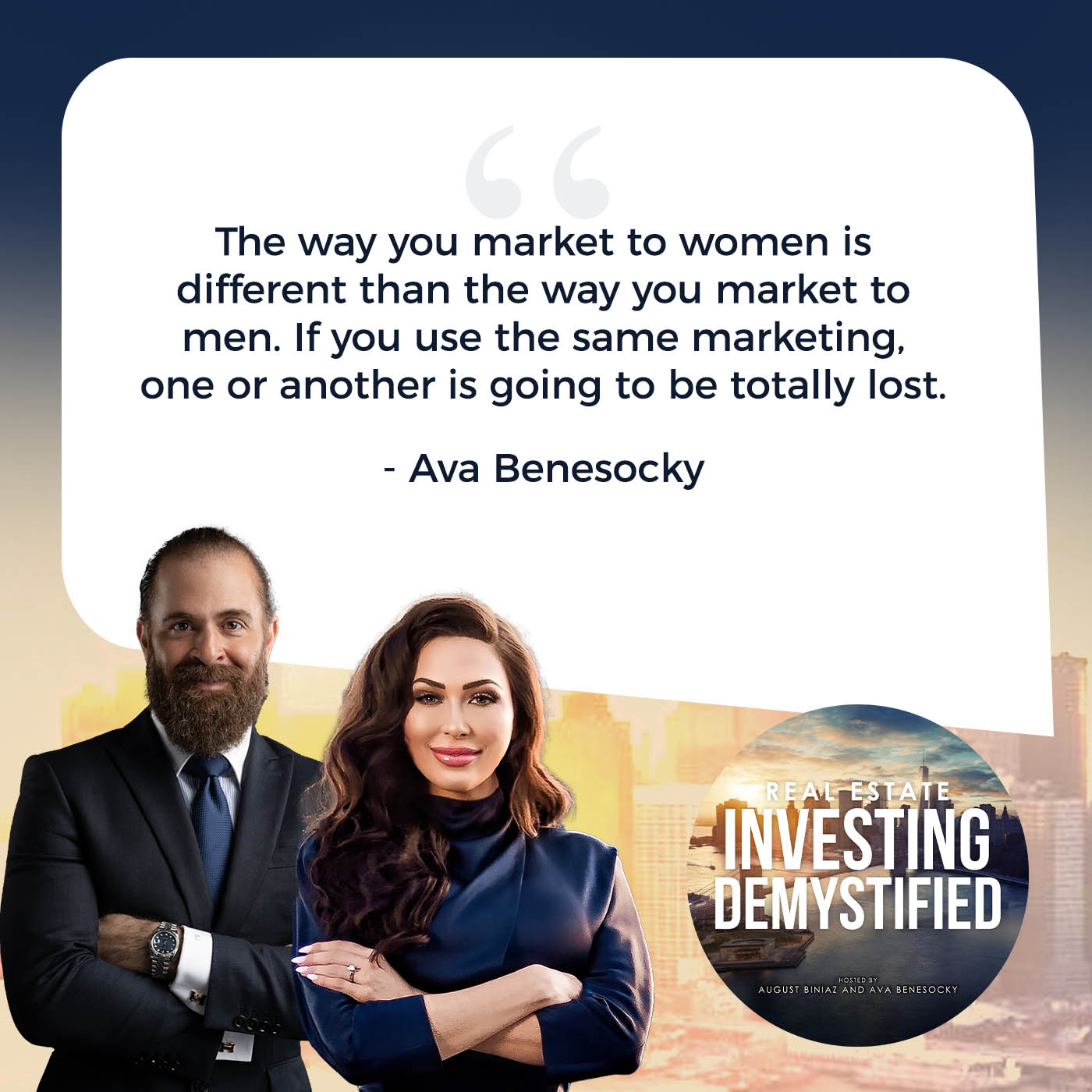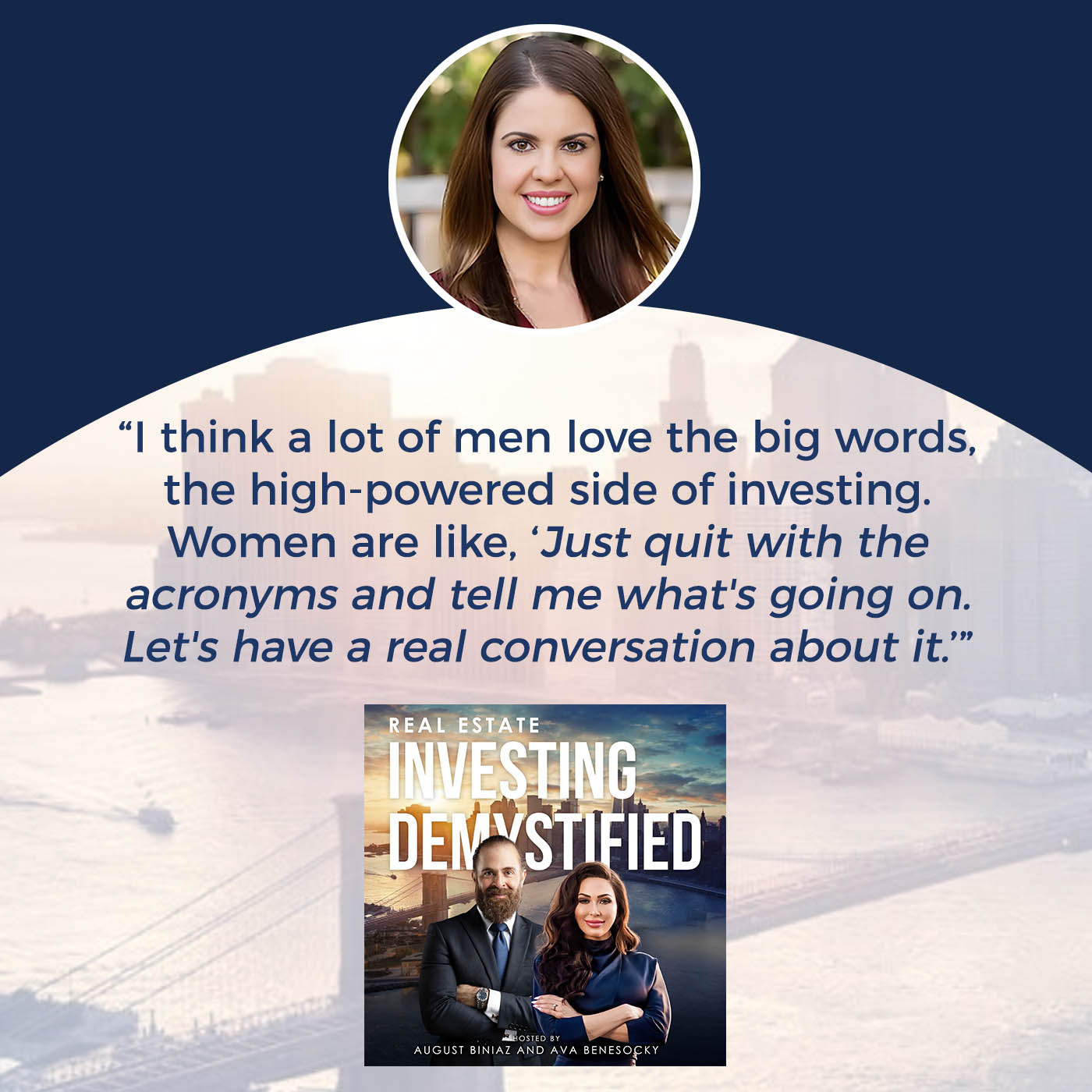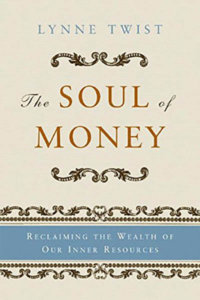In any business transaction, women have a natural advantage over men. Sales coach and business strategist Keeley Hubbard of Hubbard Capital Group acknowledges this undeniable fact, and she guides women on closing syndication deals successfully. In this conversation with Ava Benesocky and August Biniaz, she provides insights on scaling or starting your own real estate private equity business. Keeley explains how marketing approaches differs between men and women, as well as the best way to combine soft-sale with proactive strategies. She also talks about the proposed Equal Rights Amendment and her thoughts on speeding up equal gender pay.
If you are interested in learning more about passively investing in multifamily & Build-to-Rent properties, click here to schedule a call with the CPI Capital Team or contact us at info@cpicapital.ca. If you like to Co-Syndicate and close on larger deal as a General Partner, click here. You can read more about CPI Capital at https://www.cpicapital.ca/.
—
Watch the episode here
Listen to the podcast here
Important Links
- Hubbard Capital Group
- Texas Vineyards
- The Soul of Money – Amazon
- The Untethered Soul
- LinkedIn – Keeley Hubbard
- Instagram – Keeley Hubbard
- Facebook – Keeley Hubbard
About Keeley Hubbard
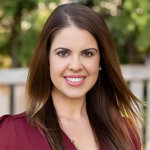
The Power Of Being a Woman In The Syndication Space – Keeley Hubbard
We’re joined by Keeley Hubbard. Keeley is the former VP of Sales of an international organization. Keeley implemented her custom sales strategy to grow annual revenues from $40 million to over $220 million in less than 4 years. As a Sales Coach and Business Strategist, Keeley helps her clients confidently close deals and raise more capital through intentional, strategic, and authentic conversations that win.
Keeley also invests in large multifamily and Texas Vineyards. She is the Managing Partner of Hubbard Capital Group, where she’s relentless and exceeds her investors’ expectations. We believe that this interview with Keely will bring great value to women real estate investors looking to scale or start their own real estate private equity businesses.
Not only women. That’s our main focus, but I’m sure men can take a lot of golden nuggets from this.
Welcome, Keeley. Thank you for coming on.
I’ve been so looking forward to this. Thank you for having me. It was so great to meet you all in person, too. I enjoyed that.
Let’s start off. Can you tell everybody about your background, and then your start in real estate, please?
I’m one of those people that escaped corporate. I always say Corporate America, but corporate exists everywhere, Corporate Canada, Corporate America. I escaped back in 2017. I was VP of Sales for the company as you had mentioned before. I just got tired of the corporate rat race. I was traveling 23 days a month.
The more that I climbed the corporate ladder, the further I got away from my passion, which was working directly with my salespeople. I left to start my own consulting business. I still run that now. It’s a huge passion of mine. I was in the financial education space when I was in corporate. I’ve been having conversations with people about money for a very long time.
When I left and I had more time available from traveling, at the same time, my dad was getting out of the financial markets. He was a professional trader and managed his own hedge fund for many years in FOREX and futures. He said, “This isn’t it anymore. In financial markets, we can’t get returns for investors. We’re going into real estate. Do you want to do it with me?” I had no clue what he meant.
If anybody’s met my dad, I was like, “I’m in.” I would go into business with him anytime. That’s where we started. I was in multifamily. I started in small multifamily and very quickly realized we cannot scale like this, and we can’t serve the investors we want to help from that space. We started getting into large multifamily, and now, we are also involved in the agriculture space of building vineyards from the ground up here in Texas. There were lots of things going on, but all exciting and very blessed.
I’ve met your dad in person as well. He was at the Dallas conference. It was quite the team. Good for you, guys. I love to break down there. Why don’t we start off with sales? Sales is the foundation of raising capital. You’re a sales coach for business owners, but Keeley, what do good sales look like that appeal to customers? If you walk into a clothing store or a car dealership, what would you consider a good mix of hands-off, soft sale, and also, proactive, take-initiative guidance?
Most people hate salespeople because everybody has such poor experiences with salespeople. No matter where you go, if you’re in Neiman Marcus, or you’re buying a car, or you’re just walking through the mall. I don’t know if you deal with that in Canada. When you’re in malls here in the US, you got to stay away from the middle where all the kiosks are.
They’re trying to grab your hair and straighten it, squirt lotion on your hands, put bracelets on your hands. They’re always trying to sell you something. We have such horrible experiences with salespeople that most consumers are so resistant to that process. A lot of people, when they get into capital-raising, they also resist it because they don’t want to come across that way.
Most clients that I’ve worked with have this misconception that they have to be somebody other than themselves when they’re raising capital. “I got to turn into this caricature version of who I am. I got to be outgoing, shoot the breeze, and get people to like me.” What’s missing is the authenticity of, “Let’s have a conversation with this person. I don’t know if I can help, but let’s sit down and talk about it.”
Most people think that they have to be somebody else to raise capital. This is a common misconception, and they are missing authenticity. Click To TweetIt’s the real authentic conversations that are missing in any sales process. That’s what I teach. You can close a ton of business. You can raise millions of capital by just having authentic conversations with people. It’s getting people to take their walls down in the first place because they’re so terrified of the sales process.
Let’s break it down a bit more.
Keeley, we discussed your experience and background in sales and marketing. How was the transition from conventional sales and marketing to investor relations and raising capital for syndicated investments? Was it different?
It wasn’t. I’ve done a lot of different industries in my sales career, but where I built my career in corporate and proved this by teaching other people how I sell, which is what grew the company. It was in financial education. Talking to people about money is the most sensitive subject. It’s why most people hold their cards close to their vest. They don’t share that information with anybody.
I had to get really good when I was in the corporate space of selling for myself, but then also teaching this to my sales teams of getting people’s walls down. They’re willing to open up and have a dialogue about something that’s so personal for them. The one thing that’s different in this space is it’s a longer sales cycle depending on what you’re selling in the corporate world.
If you’re B2B, you deal with enterprise sales that are 18 months of sales cycles. In our space, one of the challenges is we get people excited about it early on, but you may not have a deal live. We’re trying to get them excited and hold them there. Make sure that we’ve got that commitment even if you don’t have an opportunity for two months. There are some nuances there, but it’s learning people and how to get people to trust you quickly, so they’re willing to talk to you about their challenges financially.
Let’s go over this a bit more because we’re spending some time on here. Obviously, investor relations and equity are very important parts of a real estate investment firm. If you’re syndicating deals, equity is a very important component. It’s one of the main three pillars. It’s the deal, it’s executing the business plan, and it’s having both debt and equity to be able to fund the project.
Let’s walk through the journey. Marketing takes place. Marketing can be very broad. The show we’re having right now is one of those marketing channels, but marketing takes place. A potential investor realizes that we even exist. At some point, there’s a call to action. There’s a book call. There’s a book conversation. There’s some form of dialogue.
Most syndicators, in most cases, don’t have a live deal at all times. Right now, we’re just sitting on the sideline. We’re not even looking to go into any deals while the Fed is still raising rates. Talk to us about that nurturing process. We have a robust nurture process internally here at CPI. We’re trying not to overwhelm our investor database, because the last thing we want is them pressing the unsubscribe button, but there is a level of nurture.
We’re creating so much great content. We’re doing all the backend work of sourcing this information, creating the content, and putting it into our investor’s inbox. It helps us with them seeing us as thought leaders, them seeing us living and breathing the space, and then being always on top of their minds. Is that the recommended approach that you see in this investor journey timeline, particularly in syndicated deals where it’s some form of an email that they regularly receive? Talk to us about the process.
You all do a fabulous job of nurturing your database. I look at it from two different tenants that you need to consider. One is the modality of how are you actually getting that information to them. The second one is what is the messaging itself. Emails and email campaigns are important, but we have to recognize who’s in our investor database.
If they’re high-net-worth individuals and high-performance professionals, they generally barely have time to read the emails that are coming in from their W-2 or their other business, let alone try to filter through all the other personal emails that we get. Neiman Marcus emails and what’s the sale going on. Here’s a real estate investment. People are inundated with information.

Syndication Deals: Email campaigns are important, but you must recognize the people in your investor database. High-net worth individuals have barely enough time to read or even filter emails.
I do love the idea of sending emails, but are there other ways that we can get in touch with our investors and keep them in the loop? I’m a big fan of text marketing. It has a 97% to 98% open rate. The open rate is more important. The open rate in the email industry averages 15% to 30. It ranges. You’re getting straight to their phone, bypassing their email inbox. I love text marketing. That’s another one.
The third one is that I want to see my investors face-to-face. The more you see them face-to-face, the more trust that’s there. The more that you build a relationship. I’m not about an investor list. I want an investor community, and the community has a culture. It’s easy to build that when you’re seeing their face. I love investor virtual meetups.
A lot of clients that I’ve worked with will put in place a virtual meetup for their community of investors. It’s a great place once a month. I give it a catchy name and a fun title. Create a culture in that people show up with their favorite glass of wine or a cocktail, and there’s music. They know when they come in, they’re going to learn something about the real estate industry, how to make money and something about their 401(k) or retirement accounts that they didn’t know. We’re always providing value, but we’re seeing them face-to-face.
I love that idea. It maximizes your time. It’s a one-to-many communication type where people can show up and get to see your face and get plugged in. You can talk about, “Here’s why we don’t have any opportunities right now. Here’s what’s going on in the market. Here’s how our team is adjusting and managing that.”
The second tenant of marketing is messaging. What are you saying to your investors? When we get into this space, we can get so consumed with how amazing our investments are whether it’s new development or agriculture. We’re in vineyards, it’s multifamily. All of our communication with them is all about that. They’re also still heavily invested in the stock market.
We don’t acknowledge what they’re going through, or what news they’re hearing. I always check Yahoo Finance, I look at CNBC, and Wall Street Journal. When they’re watching the news, they’re reading articles. What are they hearing? We have to be in that frame of mind. What are the lies they’re being fed by Wall Street? How can we acknowledge where they’re at and give them another perspective? Before we tell them how amazing our investments are, messaging is just as important.
You said it perfectly. I want to have an investor community, not an investor list.
Let me ask you. On the once-per-month webinars, does everybody turn their camera on and they all talk to one another, and it’s like networking?
We’ve seen that. You have to create that environment. One of them that we run, it’s closed to investors that are within the vineyards. We call it Through the Grapevine. They know every time they log in, there’s music. It’s usually three different songs that have to do with Texas or grapevines. People hear this song on the radio and they texted me, “I heard this and I thought about you. How are the vines doing?”
We create this culture where there’s music in the beginning. It’s a fun environment. It’s like, “If it’s your first time here, let us know in the chat. Where are you from and what are you drinking?” We always cheers at the end of it. I think if you create that environment, people want to have their cameras on, and you’re acknowledging people like, “It’s great to see you. That looks like a good cab. What are you drinking?” It makes people want to turn their cameras on and interact because they’re getting positive reinforcement from being engaged in the process.

Syndication Deals: Create a positive environment in your webinars. This way, people are more likely to turn their camera on and interact with others.
Human beings are tribal. Imagine having a tribe of all high-net-worth investors. It looks like a cell phone, which is filled with super high net worth.
That sounds like a lot of fun. Again, we were talking about how Keeley is energetic, and fun to be around.
Let’s switch the conversation up a bit here.
This is something I’m really excited to get your opinion on, Keely. In sales, there are differences when marketing to women and men. Do you feel it’s the same way when raising capital? For example, for real estate deals, do women have a different psychology than men when investing capital?
Looking at a perspective as the woman is the investor or the woman raising capital?
The woman is the investor. We can talk about raising capital as well. We can do both ways. This is a question that we were talking about before the show. We’re like, “This is super exciting because everybody’s never thought about this.” We’d love to dissect it as far as we can go. As far as the marketing material, we know in conventional marketing, the way you market to women is different from the way you market to men.
If you use the same marketing, one or another is going to be totally lost. In capital raising, are you going to a similar type of pain point? Are you talking about the crypto and the stock market? Are you talking about what passive and what income can buy for women? How are you targeting your marketing, your approach, and your investor relations with women compared to men?
As an example, if you were speaking to a group of women, it’s like you’re on stage and there’s an audience of 200 women who are high-performance business owners. How you speak about investing is probably going to be a little bit different than if it were a room full of men. There are certain things you can get away with saying to women, acknowledging that a lot of them are the CFO of their households. Don’t tell your husband that, but we understand that you’re the one keeping an eye on the money and making those financial decisions.
Let me simplify investments because Wall Street tries to complicate them on purpose. A lot of men love the big words, the high-powered side of investing. Women are like, “Just quit with the acronyms and tell me what’s going on. Let’s have a real conversation about it.” I’ve also realized in having conversations with clients when I was selling financial education, 95% of my clients were men. They came in. They wanted to learn how to trade stocks, futures, options, and Forex. They want to get better at managing their own money. I knew if I did not get the woman involved, there was no chance that he was going to enroll in the academy.
They were investing $15,000 to $75,000 in private education. I knew that their wife, spouse, partner, or significant other needed to be involved. because she would be upset or offended if he made the decision without including her. I knew if I could get the spouse or the woman on board, they were good to go. I was aiming my conversations. Talking to them, they were like, “I’m excited about it.”
I would’ve found out at that point whom they were married to. Would it make sense to talk about this with your wife? Not to try to sell her on it, but I found that most people at least want to have their spouse on board with what it is that they’re doing. She can be supportive and you all can be on the same page. I always had some fun with it, too.
Some guys were like, “My wife doesn’t even know I’m here. I’ve already lost $40,000 in my trading account. Don’t tell her that.” My response is, “We got a problem. I’m not going to be the reason that you’re sleeping on the couch or in the garage for a month because you made this decision without her. Why don’t we bring her into the fold?”
It was more about having the couple there, and they’re both on the same page, and they’re both involved in the investing decisions. It’s the same when raising capital. Women get upset because they weren’t involved in the decision. They feel hurt or offended by not even being asked. It’s important that you have both parties on board.
I like that. When I’m having an investor call, sometimes both husband and wife will show up. If not, the husband or wife will always say, “I’m vetting right now. I want to bring my husband or wife on after.” I love what you did there. You try to bring them together.
Sometimes the wife is hiding in the background, “Who is this woman my husband is trying to send money to?” That’s why I say, “Ava, don’t be too giggly on the calls, and be stern.”
It’s very true. When I was selling financial education, I was doing workshops. Again, 95% are men. At the time, I was 24 years old, I’m quite a bit older than that now. When the spouse would come in because they wanted to evaluate the economy, my goal is to not be a distraction. I’m sitting next to the wife. I’m getting rid of barriers that are in between us, whether it’s a desk, but I’m sitting next to the wife. I’m not sitting next to the husband with the wife across from us at the table trying to sell or convince her. I don’t want her to think that I’m some 24-year-old woman trying to get her husband to spend a bunch of money. That is something you have to be aware of as a woman in this space.
We can still be feminine and we can be all the amazing things that we are, but don’t be a distraction. I get on a soapbox when women lead with that as an advantage and sell from that perspective. That bothers me. I would rather be recognized as and admired for my skillset, my knowledge, and how I help people versus, “She’s attractive to look at.” Women ruin it for people like us, Ava, that lead with that. You’re so much more than how you look. I try to tone that down and not be a distraction.
Moving on to the next question here, I’m curious. What metrics do you focus on in your marketing spend? What feedback do you prefer on assessing, whether your messaging is resonating? What is your take on advertising, SEOs, videos, and social media? I want to get all the goods here. How should we go about targeting potential audiences and converting them to paying customers or investors?
With anything, whether you’re spending money or not, I’m not investing in ad spend right now. The growth of our investor database has been organic and referrals, simply because we’re not raising $50 million this year for the vineyards. We’re just getting each individual a project going, and we’re able to supply that from our own network of people.
With any clients that I’ve worked with that have done ad spend or focused on SEO, SEO is a whole other animal in and of itself. My recommendation there is to hire a professional that understands SEO and can put out content. I feel like what’s missing in messaging and marketing, whether it’s in email, blog posts, or videos, you’re spending dollars to drive views to this type of messaging. There’s no emotional content there. Look at how amazing apartment investing is. What people don’t realize is, what drives people to make a decision to change and to do something different is a pain point. We skip over that completely.
We have to bring that back into our messaging. It could be as simple as, “I know you’re probably sitting here looking at your retirement accounts, wondering how you lost six figures. You may have been on the stock market rollercoaster now for over a decade. You know you want to do something different, but you’re so overwhelmed with everything else in your business. You just don’t know where to turn. If you feel like that, I get it. We felt the exact same way years ago. That’s why we started looking into alternative investments.”
Before we get into, “Look at the returns. Look at the tax managers,” it’s acknowledging where they’re at and speaking to their heart. That’s what gets people to make a change. That has to come into all of your content. It’s why AI is amazing, but when you’re using AI to write articles, you have to go back through and you’ve got to loop that emotional content in.
That’s what drives people to say, “You’re right. I have lost a lot of money. I’m tired of feeling this way. I am stressed about my finances. I need to do something different.” People will stick with the devil they know. They may have lost a lot of money in the stock market, but if we don’t get them to a place where they acknowledge, this is important enough and painful enough to fix it, they’re not going to make a change.
If people cannot get to a place they can acknowledge, they will never be able to make a change. Click To TweetI love that you’re saying that. Remember when I came to you the other day and I’m like, “We got to start following what’s happening outside of the real estate and try to relay that.” It’s exactly what she’s saying. She just put it all into perspective, but I couldn’t agree more.
You wanted to connect on an emotional level. I just cared about the IRR.
Feminine versus masculine energy. That’s a great example of it.
Let’s switch the conversation about the women-men dynamic in the business and workplace.
After a good half a century, after the women’s rights movement in the 1960s, there’s still a gender wage gap. Keeley, what’s your take on affirmative action approaches to giving women a leg up? For example, such as Finland’s quota, 40% of corporate board seats must be taken by women for companies with more than 250 employees. As opposed to more bootstrapping approaches that remove restrictions to enabling women entrepreneurs and hiring more women. Isn’t there a better way to speed up gender equality? Any thoughts on the proposed Equal Rights Amendment, the ERA?
I may have an oppositional perspective on this. I even have had a woman get upset with me about this in the past. This is an interesting story. When I was in corporate, I was the only female executive on the team. I was also the youngest. The second oldest was 15 to 16 years older than I was. I was dealing with many executives. The youngest was 42 or 43. The CEOs, COOs, and CMOs are all in their 60s.
For me, there were some things that happened where I was called dear, and things that are inappropriate in the workplace. I believe what earned me my right and my seat at the table was my believing that I deserved to sit there in the first place. I think a lot of women play small and we perpetuate this idea that we’re less than with a lot of these movements.
I believe women deserve a seat at the table, but if we don’t believe that first internally, nobody else is going to do it for us. It’s in how you show up every day in your skillset and how you present yourself, and the lines that you draw in the sand of how you’re willing to be treated. There was a time in a meeting, my former CEO went off, and something went wrong. It wasn’t my fault, but I’m the one that he chose to yell at in a meeting full of a lot of people that reported to me that were directors, other VPs, and other executives.
Women deserve a seat at the table. But if they don’t believe in themselves first, nobody else will do it for them. Click To TweetFor me, if I don’t believe that I deserve a seat at the table and I deserve to be treated the exact same way as any other man in the room, I’m not going to step up and stand up for myself. When we took a break at the meeting, I made sure people heard it. I said, “I need to speak to you outside.” He came outside and I said, “You’re not allowed to ever talk to me like that again.”
I drew the line, and then, stand in a respectful manner, but everything changed from that point forward because you teach people how to treat you. Initiatives happen in the company for the Lean In Movement. “Keeley, do you want to head this up?” My response was, “No. I didn’t want to head it up.” They said, “You’re the only female executive on the board. Do you want to head this up?”
I said, “No because it’s going to perpetuate the idea that women don’t deserve to be at this level.” I would rather lead by example. I have a different perspective on it, but in a lot of this, women don’t show up at the level they should because they don’t believe they deserve a seat at the table. We have to do the inner work first.
It’s the merit approach, rather than any type of codas or forced restrictions.
Instead of waiting for organizational changes and rules and regulations to come down, demand it for yourself first. Walk your butt into the CEO’s office, sit down, and say, “I deserve this. I deserve the pay grade.” We have to advocate for ourselves instead of waiting for somebody else to do it for us.
We have to advocate for ourselves instead of waiting for somebody else to do it for us. Click To TweetAnother plan is just for Ava to walk in with a gun.
That works, too.
I was under duress. That’s how she became the CEO, and that’s how I work for her.
I love it.
I’m just loving Keeley more as she talks. She’s such an incredible woman. I’m excited to learn more about the vineyards. I want to learn how did you get into this field. You are an agricultural investor that syndicates vineyards, so let’s talk about that. How did you get into it?
Give us a crash course. Talk to us about everything. You were talking about tax advantages that certain real estate and syndications have. We were interviewing a friend of ours who does oil and gas, and there are huge tax benefits there. Give us a crash course on vineyards. It sounds very fun and elegant, but tell us about the money. Tell us about a crash course on this asset class.
Do people get free wine?
I’ll give you a quick how we got into it. A partner of ours called us. It was my phone number that was on the website at the time. I picked up the phone. He’s like, “You don’t know who I am, but I got to talk to your dad. Can I talk to him? Can I have his phone number?” I was like, “Sure.” He’s adamant. I called my dad, and I was like, “I gave some guy your phone number. I don’t know what he wants, but he’s going to be calling you.”
It was our partner. He heard my dad on another podcast where my dad was talking about, “What do you do in your spare time?” He talked about the ranch. We have a family ranch. It’s close to 300 acres. He’s going to run cattle on it, going to put 30 acres of vineyards on there to help make the land payment. That came up in conversation.
Our partner heard this. He also knew my dad had run six companies. He knew my sales and marketing background, so he put the connection together. They’re the agriculture side, they’re the vineyard operators, they’re experts in that, but they’ve never raised capital. They’ve never syndicated. They don’t even know where to start.
That’s why they partnered with us. “Can you bring that aspect to the business and help us create a brand and build a legacy in Texas?” That’s where we started. Vineyard is a very elegant name, but the reality is, we’re grape farmers. That’s what we’re doing. We are growing wine grapes. We are crushing the juice, and selling it to the wineries.
That’s the only part of the supply chain that we are focused on in the syndication space because that’s where the majority of the money is made. It’s fun and sexy to make wine, but that’s not where the money is made here. We don’t care if we were doing trash dumps. It makes a lot of money. We’ll do it, and our investors will follow. We just happen to be in a fun space of vineyards.
Texas Vineyards. Texas has a 13.1 billion wine industry here. Most people don’t know that because it’s all consumed in-state. Nearly all of it is consumed in-state, but we don’t have enough grapes to meet the demand that continues to grow. We are only producing 50% of the wine grapes that we need to meet the demand.
Where are the extra grapes coming from? Anybody could guess it. It’s coming from California to make the wines based on what Texans are wanting to purchase. If you’ve ever met an obnoxious Texan, and if you haven’t, maybe I’ll be the first one. We don’t like that. We like Texas to be Texas. We want Texas wine to be Texas grapes.
Our partners have their own 350-acre vineyard that they operate themselves. They were tired of seeing California juice keep coming into Texas. They realized there was this massive supply gap, so that was their goal. We’re going to fill the supply gap. We’re going to bring production up to meet existing wine demand and the growing wine demand. It’s all going to be Texas grapes, which wineries love and appreciate.
That’s the business plan. We’re doing it differently than most Texas vineyards out there. They’re mom-and-pop. For example, our partner’s 350-acre personal vineyard is run by three guys. Big tractors and machines are how California runs its vineyards. Every other vineyard farmer in Texas is hand labor. You would need close to 100 people during harvest and during pruning to do things by hand.
We do it with large tractors. Why are Texas farmers not doing that already and transitioning over from a technology perspective? It’s expensive, and they can’t afford the equipment. One of our tractors comes from France. It’s over $500,000 just for that one piece of equipment. How do you scale it? You do syndication. You get economies of scale.
We go in there. We operate like California. We close the gap in the wine grape supply and make our wineries happy at the same time, especially the big operators that have been waiting for a player like this to come on the scene. We’re excited about it. It was a once-in-a-lifetime opportunity and we jumped on it.
Are you more of an M&A type of style where you’re syndicating the business itself, or are you buying the dirt? Are you buying land?
We’re doing it all. We’re buying the land. Investors are invested in the business itself, but the business owns the land. We buy a 400-acre block of land e just purchased. We start doing land prep. We order the vines. All the 240,000 tea posts of steel get delivered. We have about 600 acres of vines going in the ground this coming spring. They’re in it for 25 years. If we decide to replant, we have contingency funds for that as well. It’s an investment that cashflows for decades. That’s why a lot of investors are attracted to it.
I’m sure we are familiar with champagne. You can’t call anything champagne unless it comes from the Champagne region of France. Does the geography in Texas that you’re focusing on have any potential to become the champagne region of Texas? Is there something special about the dirt, elevation, or about water sources?
Not champagne because it’s too hot here. The climate of the grapes that we grow is very similar to Central California. We do a lot of reds. Reds sell for quite a bit more than whites. That’s why we like them too. It helps us hit our pro forma for our investors. Texas land is so inexpensive. We’re getting acreage below $3,000 an acre whereas similar land in California with the same water sources would be $20,000, $30,000, or $40,000 an acre.

Syndication Deals: Texas land is so inexpensive at around $3000 an acre only. Similar land in California reaches around $20,000 to $40,000 an acre.
We can buy land for pretty inexpensive here. We’re able to operate the vineyard at a pretty low cost. Our labor tends to be less here as well. We sit on top of an aquifer that’s been here for over a century. We’re not concerned about water sources like California’s dealing with. We don’t have the humidity that a lot of other regions have, which requires more spraying of fungicides. We’ve got a hot and dry climate, which is perfect for certain varietals that we grow. Texas land is cheap. That’s the biggest reason for it.
Can you give us a quick overview of what’s the risk-return profile?
Even though we have investors that are like, “We don’t care. We’re in,” the downside is that you have to wait for returns. It does not cashflow out of the gate. Vineyards are not annual crops. You plant them once and they last for 25 years. It takes time for us to train the vines up and build a strong Woodstock before investors see a return.
Their first return comes in at year four. After year four, we hit full harvest. In year five, returns are over 30%. We always say, “The juice is worth the squeeze.” It’s worth the weight to get those returns. We give it a ten-year return model but it cashflows longer than that. Over ten years, the returns are about 210% to 275% depending on our production and the wine varietals.
After that, it cashflows 16% a year for the life of the vineyard. If we decide to replant, we replant. We have contingency funds and it’ll keep cashflowing 16% a year. A lot of investors are looking at it like a legacy play. They’re thinking about their kids and their grandkids. We are excited about the risk in a vineyard because our operation’s so big.
We have crop insurance. I wish we could get occupancy insurance in multifamily. We can’t, but in this space, we have multi-peril crop insurance that we’re paying anywhere between $600,000 to $800,000 a year in premiums. To make sure that if something happens, our income is covered, and we’ll be reimbursed 75% of our projected harvest. We can distribute checks to our investors, and then we repair the vineyard and we plan for harvest the following year. Crop insurance is something that’s unique in this space.
You guys started off with multifamily. Are you still investing in multifamily? If yes, what is your allocation from vineyards to multifamily?
We’re divesting out of multifamily right now. We’re selling one of our properties. I’m going to be blunt with you. My dad is tired of asset management of some of the deals that we’ve done. We’ve done some heavy lifts. I’m sure you all know, being involved in the day-to-day with those heavy lifts and the big value ads is a lot of work.
My dad has always wanted to be more invested in land. We are in vineyards. We’re looking at timber projects. We’re exploring some other land opportunities. It’s not that we won’t go back into multifamily. We’re going to wait to see in this market. It makes more sense for our attention to be focused on the agriculture space to get this vineyard operation of multiple vineyard blocks up and running. Build the infrastructure before we distract ourselves with other shiny objects.
You’re located where?
I’m in Fort Worth, Texas. Dallas, Fort Worth.
The wineries, where are they located?
They are in Northwest Texas. Have you ever heard of Lubbock? It’s about 45 minutes outside of Lubbock. It’s called the High Plains AVA, which stands for American Viticultural Area. You would never end up there unless you’re driving through Texas, headed to another state maybe. There are a lot of cotton farmers out there. More than 30% of the US cotton is grown out there. It’s just flat land with no trees, not pretty, but it’s a great climate for growing grapes.
How far is it from Dallas?
From where I’m at, it’s about a 4.5 to 5-hour drive.
Keeley, what would be your elevator pitch to an investor that’s looking to possibly invest in this syndicated vineyard?
They wouldn’t even know about it, but if you’re in a room of investors, what would be your elevator pitch?
It’s like talking to somebody. I’m curious, how would you do that?
This is what I found with investors. We have investors that are in multifamily, they’re in the stock market. Diversification is important in their portfolio. One of the challenges for a lot of investors in multi-family is their money flips sooner than they expected. They thought they were in a 5 to 6-year turn. They’re getting their money out quite a bit sooner, and then they don’t know where to put it.
We’re often hearing, “Where can I put my money long term where it’s going to generate passive income?” That’s what we’ve designed within the agriculture space, specifically with Texas Vineyards. I always come from the angle of passive income. You’re not flipping your money constantly and having to put it somewhere. It’s going to cashflow long term. I always give the caveat. With that being said, you’re not going to expect returns right out of the gate. I think the more that I emphasize that, the more investors want to be a part of it. I always lead with the negatives of why it’s not the right fit for every investor, and they want to know more.

Syndication Deals: If you do not have passive income, you are not flipping your money constantly.
Perceive negatives. You were guessing she was going to include the free wine.
We’re going to private-label wine for sure. Our partner has their own crush facility. They have a winemaker. We’re looking at building out more crush facilities and getting involved in that next step of the supply chain. We might get into bottling, probably just private labels for our investors.
It would be cool little to incentivize them. “By the way, here, you get a couple of bottles of this beautiful wine.”
We appreciate your wisdom, and we appreciate you giving us all these golden nuggets and information about the business you’re in, investor relations, and vineyards. Let’s get to the next segment of our show, the Ten Championship Rounds of Freedom.
Whatever comes to mind, I’m going to start asking you questions. I’m looking forward to hearing what you got to say. The first question is, who was the most influential person in your life?
My dad, without a doubt in my mind. Everybody always thinks it’s a celebrity or a historical figure, but it’s my father. The reason for that is that he’s a Marine. It’s his persistence and his mindset. I always remember a quote that he says, “If you can’t run anymore, walk. If you can’t walk anymore, crawl. Even if you’re on your belly, whatever it takes, just keep moving forward.” I’ve seen him go through so many things in his life and he never lets it get him down. He’s such an inspiration to me.
That’s beautiful. Next question, what is the number one book you’d recommend?
There are so many. One that I really love is called The Soul of Money by Lynne Twist. It’s so good because we’re involved in money in our business. We’re talking to investors about money. We don’t understand or even think about some of the constructs that we have in our minds about how we view money. It’s breaking through some of those belief systems.
This book showed me how much we’re a vessel. Money is just a tool, and we’re simply the vessel. The more money that we have, the more money can flow through us to be a vessel for good and do more good in this world. It’s such an incredible book. I probably shouldn’t give you a second one, but The Untethered Soul is another great one.
Next question, if you had the opportunity to travel back in time, what advice would you give your younger self?
I love that question. My advice would be to bring joy back into the process. I’m just learning that from a business coach. I’m such an intense personality. You may not see that, but I’m a driver. When I was in the corporate space, it was this hustle culture. You got to do more, to be more, to get more. You exhaust yourself, and you get to a place where it’s emotionally bankrupt.
Why am I doing this if it’s not fun? What’s the point? In business, we lose sight of having joy in the process. My nickname as a child was Twinkle. My grandma still calls me that, but she said it’s because I always had this joy in my spirit. You could feel it when I walked into the room. I realized, “What kind of energy am I bringing into a room? I got to get back to who I was as a child, not let business, all the to-dos, and all the things and responsibilities that we have suck the joy out of the process.” That’s what life is supposed to be. Why don’t we enjoy this crazy wild ride that we’re on?
Have fun while you do it.
What’s the best investment you’ve ever made?
It sounds like it’s a canned pitch, but for us, it’s the vineyards. Even though the payout and the returns for us are coming with the investors in years 4 or 5, for me, this has been a lifetime opportunity, and completely changing the financial trajectory of my life.
What’s the worst investment you’ve ever made? What lessons did you learn from it?
As a business partner. Partnerships, as you all know, are so important. My dad and I laugh. We’re like, we’re only ever going to go into business with family from now on. I know people are like, “Family, that sounds risky.” Our family is so tight-knit. When I left corporate, I got into a partnership that completely leveled me financially.
It was something I poured my heart and soul into. It was going to be a game-changer for everybody involved. It felt like the rug was pulled out from underneath me overnight and completely leveled me. I was left feeling, “Was I cut out for this? Should I have not left corporate? Should I be in business?” I’m so glad that I went through that because looking back, there were so many lessons learned. I wouldn’t be who I am now if I hadn’t gone through those hardships. Whom you do business with is more important than what the actual product is itself. Who are the people?
How much would you need in the bank to retire today? What’s your number?
Your lifestyle keeps growing. I love nice things. That’s why I was so drawn to you all. We can appreciate the champagne lifestyle, the luxury. For me, the number to where I would feel completely exhaled is probably $10 million, but I wouldn’t stop working. I even realized like $10 million’s not that much. To have $10 million in the bank, that’s a good cushion, but I would still continue working. For me to sit back and say, “I’m set,” it’d probably be closer to $30 million.
If you could have dinner with someone dead or alive, who would it be?
Teddy Roosevelt or Winston Churchill. A lot of my brand and something that’s been a big influence in my life is the man in the arena speech. It’s everything to who I am now. The primary question that drives my actions every day is, “Are you sitting in the stands? Are you standing in the arena?” That gets me fired up. It anchors me. It reminds me of living and building a big life. I would love to talk to both of them, especially Winston Churchill, and understand his frame of mind with all the things that he went through during that time.
If you weren’t doing what you’re doing, what would you be doing now?
That’s hard. If I was completely financially independent, I would be giving away my sales coaching. If I was worth $30 to $40 million, I would be getting on as many stages as I could. Helping business owners break through to the next level. There’s no way I can live and not do sales coaching. I feel like it’s a gift that God gave me. I would love to get to a place where I’m investing my time and doing it for free to help business owners better their life.
Book smarts or street smarts?
Street smarts. I have a college education. I have a Bachelor’s degree. I thought about going back to get my MBA. I’m not knocking the system. I have a lot of friends that have several degrees and have doctorates. I learned so much more with real-life lessons learned, and I’d much rather have street smarts than anything that the educational system could give me.
Last question, if you had $1 million cash, and you had to make one investment, what would it be?
It’s in the tech space. Tech startups are risky, but I would throw it all in there.
That’s a wrap.
We appreciate it. Thank you so much.
Before you go, let everybody know what’s the best way that they can reach you.
Find me on social media, LinkedIn, Instagram, or Facebook. Shoot me a message. I love to talk to people. You’re probably going to get a voice message back, or maybe even a video. I’d love to meet people through social media.
Thanks so much. We really appreciate it, again. We should do this again at some soon time telling us about the next steps and what you’ve been up to. Hope to see you again.
Thank you all so much. It’s been a joy. I really appreciate it.
